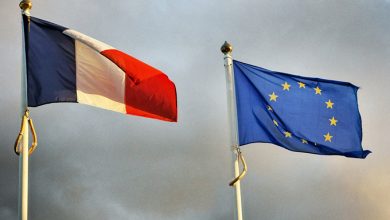French Populism Is Neither Left Nor Right – Here’s Why

Populism has been one of the chief preoccupations of political debate in the West after the Great Recession of 2008. As economies contracted and voters grumbled, a new crop of anti-system politicians led the charge against supposedly out of touch elites, liberalism, and political correctness. They claimed for themselves the mantle of “populism”, a word which originally describes a communication style of demagogy and empty promises. They turned the meaning on its head, claiming instead that populists stand with the people and against the elites.
As usual, there is absolutely no reason to take the populist narrative of themselves at face value. Moreover, their attempt to present themselves as common sense parties for the common man are highly dishonest. Anti system parties are not new in the West, and while they can often implement “catch all” strategies, they are always traceable to the political spectrum if one looks closely enough.
Northern And Southern Populism?
Philip Manow, a German political scientist, has developed a theory about populism, dividing it into two distinct geographical expressions, one for Northern Europe and one for Southern Europe. The difference, according to him, is that Northern populism is a form of nationalism, whereas Southern populism is primarily an anti-globalisation movement. Examples cited range from Spain, in which the left wing of the political spectrum is in great health, to Greece with its governing “coalition of the radical left”. In countries like Germany, Sweden etc, the populist wave would instead be markedly against immigration.
This model has many flaws. Recent political developments in Spain have shown the emergence of a far right movement much in the nationalist style supposedly unique to Northern Europe. Italy bucks the trend, too, with far right party North League currently first in opinion polls with a huge lead. Moreover, northern populists themselves don’t pull punches in their critique of globalisation.
Even more importantly, Manow falls into the most common mistake of taking populists at face value. It’s true that there are many similarities between so-called populist platforms, not just in Europe, but in the West in general: opposition to political correctness, hostility to civil rights, economic nationalism, foreign policies based on antagonism rather than cooperation etc. These similarities, however, don’t point to a single populist political platform, not even one split along geographical lines: they are simply a rejection of liberalism and social democracy. There is no news in this, and one wonders why the phenomenon has baffled people so much, when there is no mystery at all. The far right and the far left have both rejected liberalism for as long as they have been around. Their critiques might at times overlap, but they did the same in the 1930s and the 1940s.
In fact, it’s precisely the rediscovery of these terms – far left and far right – that best explains the character of these populist parties, including both their similarities and their differences. Let’s look at a real world example in which both extremes played an influential role; the French presidential elections of 2017.
The Far Right And The Far Left In France’s Presidential Elections

Of the top four parties, two made the headlines for their radical and “populist” platforms. The first is the famous far right party led by Marine le Pen, back then still called Front National (literally national front). This party is not new – it was founded in 1972, and has been a regular fixture in elections since then. In the first round of the 2017 presidential elections, it gained 21,30% of the votes.
The party, which has recently been renamed Rassemblement National, has moved away from traditional French far right positions and embraced the growing internationalisation of far right ideologies. Earlier in 2019, it has also quietly dropped its demands to quit the European Union and the Euro. Nevertheless, the key tenets of its campaign remain: French nationalism, opposition to immigration and globalism, and virulent Euroscepticism.
The other populist party is the far left list represented by Jean-Luc Mélenchon, and called La France Insoumise (literally the non-oppressed France). This party gained 19,58%, materially translating into some 600.000 fewer voters than the Front National. Both parties have been branded as “populist”. Both tried to appeal to rural and blue collar voters with a campaign run against the establishment, the European Union, transatlantic ties, and just about any spook imaginable. And yet, the parties remain distinct in identity, representing the far left and the far right in France.
La France Insoumise isn’t the communist party of France, nor is it an old name in French politics. It was founded on the 23rd April of 2017, from the fusion of the ‘Parti de Gauche’ (Party of the Left) and a coalition of parties called the ‘Front the Gauche’ (Left Front). They ran as one party for the 2017 presidential elections, running on an anti-capitalist and Eurosceptic agenda.
As is common in the West, the French Presidential elections were affected by high rates of abstention, coming at around 22,23% and 25,6% for the first respectively second turn.

1965.
If we count at the abstentionism, we obtain that 16,57% from a total population of nearly sixty-five million voted for Marine Le Pen in the first round. By the same calculation, La France Insoumise scored 15,23%. The two extreme parties, taken together, do so reach 31,80% of the total amount of eligible voters in the first round of the election. A third of the French population voted for either the far left or the far right. But is this section of the population truly homogenous?
The Old Divisions Haven’t Gone Away
Traditional parties are struggling everywhere in Europe, but in France, their decline has been ruinous. With the country’s high unemployment rate and social tensions, both traditional parties that have for so long defined French political history scored catastrophically low. The French ‘Parti Social’ (Social Party), which produced Macron’s predecessor as president, François Hollande, barely reached the 6% mark. Its decline was confirmed in the recent European elections. Their traditional adversary, Les Républicains (The Republicans) saved face with 20% of votes in 2017, although their downward spiral continued – they were overtaken by the Greens in the 2019 European elections, for a start.


However, just because the two traditional main parties are ailing, that doesn’t mean there is anything especially new on the table, much less something that deserves the brand-new name of populism. Far left and far right ideas have been part and parcel of French democracy for more than a century, and while there is some overlap in the voter segments targeted by Le Pen and Melenchon, there are also key distinctions. Let’s look at this demographic map of France.

Now, let’s compare it with a map of voting preferences at a regional and local level for the 2017 presidential elections. There is a clear overlap between economic difficulties and a preference for promises of deliverance over continuity with the past. That should not be surprising. What is more interesting, however, is that the Front National and La France Insoumise do not overlap geographically.


We can clearly see that the Front National got the most votes in the east and north of the country, areas that traditionally lived off heavy industry and mining. These areas have been negatively affected by de-industrialisation. Interestingly, however, voting support for La France Insoumise does not map on the same areas, collecting its support primarily in rural and agricultural areas to the south and west of France, as well as in a few arrondissements in Paris.
This data should caution us not to jump to conclusions. There is some truth in the notion that so-called populist parties run campaigns centered on anger, frustration, and rejection of the establishment. But that has been true of all anti-system parties and movements in the history of European democracy, and does not automatically signal the emergence of a coherent “populist” opposition to the elites. Not only do these parties have different identities and platforms, they also have distinct voting bases. The attempt at making these parties appear de-politicised and honest representatives of the common man are a communication ploy. Nor can the division in current politics today simply be described as one of globalists versus anti-globalists.
The social tensions and economic problems at the root of the changes in French politics need to be addressed. If Emmanuel Macron can’t, the likelihood that Le Pen will be asked to is high. Nevertheless, the divide between the right and left is not dead, not even on the extremes: it remains alive, both in ideology and in geographical and demographic distribution. These parties have a common enemy – liberal democracy – but not a common agenda. It’s time to drop the confusing moniker of “populism” and return to the names that successfully described radicals for a long time: far left and far right extremists.




![Photo of [OPINION] A Europe of Regions Makes no Sense](https://mycountryeurope.com/wp-content/uploads/2018/04/ggg-390x220.jpg)
